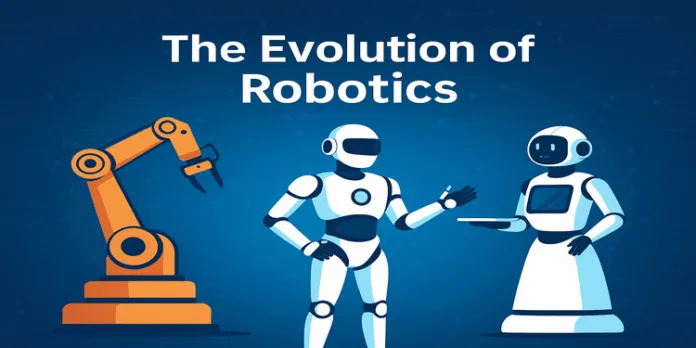
The evolution of robotics has been one of the most defining aspects of technological advancement in the modern world. From their early days as programmable machines handling repetitive tasks in factories, robots have grown into intelligent, adaptive, and even interactive companions in our daily lives. This rapid transformation is not just reshaping industries but redefining the way humans interact with technology on a daily basis.
A Glimpse Into the Past: The Industrial Robotics Revolution
The journey of robotics began with their introduction into manufacturing industries in the 1960s. These early machines were primarily built for repetitive and hazardous tasks. Assembly lines, particularly in the automotive sector, saw the first significant use of industrial robots, boosting productivity, precision, and safety.
Robots like Unimate, considered the first industrial robot, were used to handle hot metal parts and perform welding tasks, drastically reducing human exposure to dangerous environments. Over the years, improvements in software, mechanics, and control systems made robots smarter, faster, and more adaptable to different production lines.
Robotics Beyond the Factory
By the late 20th century, the evolution of robotics began to seep into new territories. Medical robotics emerged, allowing for minimally invasive surgeries with increased precision. In agriculture, robots began automating harvesting, planting, and irrigation. Meanwhile, warehouse robotics revolutionized logistics with autonomous vehicles optimizing inventory management.
As robotics evolved, so did artificial intelligence and machine learning. This combination led to smarter robots capable of understanding environments, learning from data, and even communicating with humans.
The Rise of Consumer and Service Robots
Fast-forward to the 21st century, and robots are no longer confined to industrial or institutional use. Today, they are found in households, hospitals, restaurants, and even classrooms. Robotic vacuum cleaners, smart kitchen appliances, and home assistants like robotic pets or AI-integrated devices are reshaping domestic life.
In the service sector, robots are deployed for tasks ranging from food delivery to hotel concierge services. Some are humanoid, designed for interaction and emotional recognition, offering support in eldercare and companionship for isolated individuals.
Key Technologies Driving Robotic Evolution
The current phase in the evolution of robotics is powered by a convergence of technologies:
- Artificial Intelligence (AI): AI allows robots to learn from data, adapt to environments, and make decisions in real time.
- Machine Vision: This enables robots to “see” and interpret visual information, essential for navigation and object recognition.
- 5G Connectivity: Ultra-low latency connections facilitate real-time robotic control and cloud processing.
- Sensor Integration: Advanced sensors give robots the ability to detect temperature, pressure, movement, and proximity.
- Edge Computing: Robots can now process data closer to the source, improving responsiveness and autonomy.
Challenges and Ethical Considerations
While the evolution of robotics brings immense benefits, it also raises concerns. Job displacement, data privacy, dependency on automation, and the ethical use of robots in warfare are significant issues. There is also ongoing debate on how to regulate AI-powered robots in decision-making roles, especially in healthcare or law enforcement.
Governments and organizations are actively working on frameworks to ensure that robotic innovation is aligned with ethical standards, human rights, and sustainability goals.
The Road Ahead: What’s Next for Robotics?
Looking forward, the next decade promises even more dramatic advancements in robotics. We can expect:
- Human-Robot Collaboration (HRC): Robots will work alongside humans in shared spaces more seamlessly.
- Robots with Emotional Intelligence: Robots will detect and respond to human emotions with greater empathy.
- Self-repairing Robots: Inspired by biology, future robots may have regenerative or self-healing capabilities.
- Swarm Robotics: Groups of robots will collaborate to complete complex tasks, particularly useful in exploration or disaster zones.
- Personalized Robots: AI-driven customization will allow robots to learn individual user preferences and routines.
Conclusion
The evolution of robotics is not just a technological journey—it’s a human one. As robots continue to expand their capabilities and enter new aspects of our lives, they are becoming more than just machines. They are collaborators, assistants, caregivers, and in some cases, companions. The transformation from factory floors to everyday life marks only the beginning of a future where robotics will be a deeply integrated and indispensable part of human society.